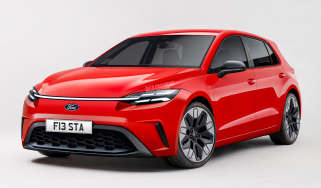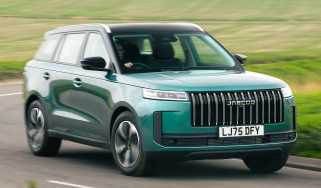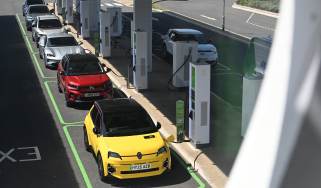Dacia Sandero 1.5 dCi Ambiance
The UK’s cheapest diesel majors on space and value for money
You get what you pay for with the Sandero. But in mid-spec Ambiance trim it makes much more sense than the entry-level Access model we previously tested. And while the 1.5 dCi diesel is noisy, it has a decent turn of pace, and will leave you with impressively low fuel and tax bills.
The launch of Dacia in the UK at the start of the year introduced a new way of selling cars. Renault’s budget brand offers a range of basic, no-frills models at bargain prices that undercuts similarly sized rivals by a significant margin.
We were impressed by the Duster crossover in our test last year, but thought the entry-level Sandero was too basic for its own good when we tried it. Can the base diesel model, the cheapest diesel car on sale in the UK, charm us more than the petrol version?
Well for a start, this Sandero Ambiance looks better than the entry-level Access. Body-coloured bumpers and plastic wheel trims add more style to the exterior, although you’d struggle to call the car handsome. The bulbous nose is distinctive, but it looks out of proportion with the rest of the car, and fails to make an impact like the sharp Rio or cheeky Panda. It’s better from the rear, and looks a little like a Citroen DS3 at the back.
Used - available now

2022 Dacia
Sandero
23,194 milesManualPetrol1.0L
Cash £10,995
2022 Dacia
Sandero
8,534 milesManualPetrol1.0L
Cash £8,999
2024 Dacia
Sandero
20,000 milesManualPetrol1.0L
Cash £8,495
2019 Dacia
Sandero
78,855 milesManualPetrol1.0L
Cash £4,299You’ll find the cabin rather uninspiring, though, both in its finish and how much kit it offers. The dashboard, headlining and seats are all the same battleship grey, while a black dash top and centre console fail to lift things.
There are pieces of Renault switchgear dotted around the interior, and the flimsy feel to the controls is a constant reminder that you’re in a car that’s been built down to a price.
At least the heater controls and stereo are unique to the Sandero; you just don’t get much more than that for your money. There’s no air-con – it’s not even an option – the mirrors are manually operated and the steering wheel has no adjustment. However, it’s fixed in a position that will be fine for most drivers.
Back seat space is better than in either rival, although the vinyl-effect trim for the front seatbacks and the wind-up windows are further reminders of the car’s budget origins.
A boot capacity of 320 litres is nearly 100 litres up on the Panda’s, but there aren’t any particularly practical touches, apart from the 60:40 split rear seat, while the only ways to open the boot are with the key in the lock or via a flimsy lever by the driver’s seat. This operates a cable that unlatches the lock, but the other end is exposed to the elements on the bare painted boot lip, and it feels like it could go slack in time.
Fire up the 1.5-litre diesel, and it’s clear that Dacia has scrimped on sound deadening in its search for a lower price tag, as there’s a lot more noise from the engine bay than in either rival. The tried-and-tested dCi engine has been used in Renaults for years and, while it can get quite noisy, it delivered a surprisingly decent turn of pace at the test track – enough to make the Dacia quicker than the other models here.
Soft suspension means the Sandero is comfortable in town, as it soaks up bumps without fuss, while the engine’s mid-range power ensures there’s plenty of grunt to keep pace with city traffic. Head for a twisty road, and the Sandero’s budget roots shine through again. There’s lots of body roll in corners and very little support from the seats, too, while the lifeless steering and nose-heavy handling discourage keen driving.
But then a budget diesel supermini is more about running costs than driving thrills. In that regard, the Dacia is very attractive. At £8,395, the Sandero 1.5 dCi Ambiance undercuts the Rio 1.1 CRDi 1 by £3,500. Neither car offers you much kit for your cash, although the Sandero edges ahead, as it comes with Bluetooth as standard, and there are hardly any options on the Rio.
Both cars are road tax exempt, while the Dacia’s 49.2mpg test economy is 5.9mpg better than the Kia’s. Company car tax is only £234 for lower-rate earners, insurance is competitive, plus residual values are a respectable 46.5 per cent over three years, so you’ll lose a lot less than on either rival here.
The numbers make a very strong case for the diesel Sandero, but are the savings enough to gloss over the clear compromises made to get its price below £9,000?


